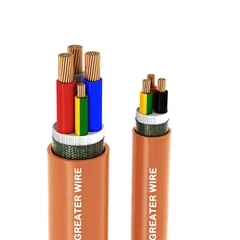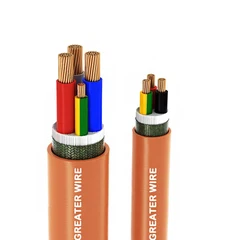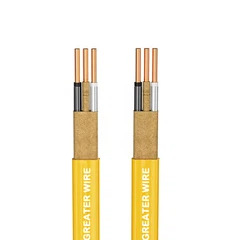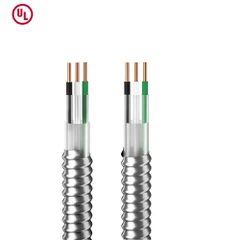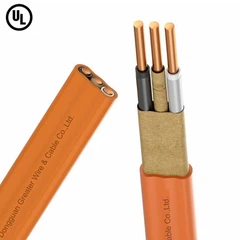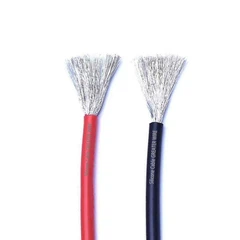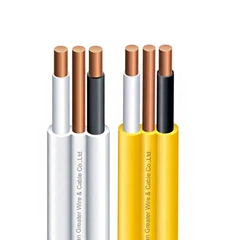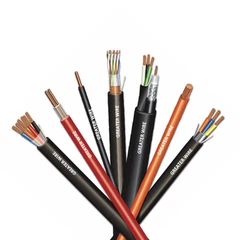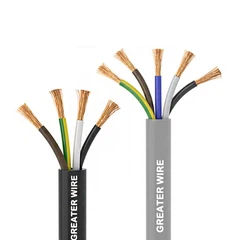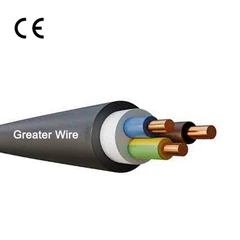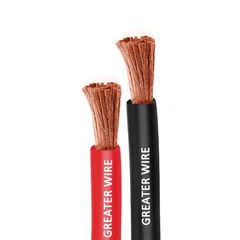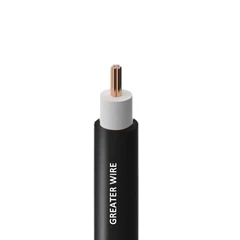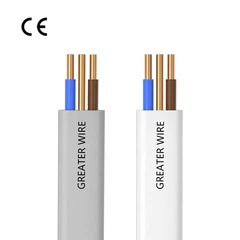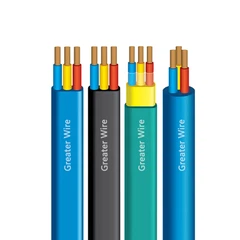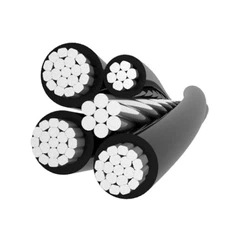Medium Voltage Cables are an important part of modern power transmission systems and are widely used in power distribution in urban power grids, industrial areas, commercial facilities, and residential areas. With the acceleration of urbanization, underground power transmission has gradually become the main choice for urban power infrastructure, which provides a huge market demand for the use of medium voltage cables. In particular, medium voltage armored cables have become an ideal choice for power transmission in underground and urban environments due to their excellent mechanical protection and environmental resistance.
This article will explore the application of medium voltage cables in underground and urban environments, analyze their advantages and challenges in these special environments, and focus on the role of medium voltage armored cables in urban power transmission.
1. What is a medium voltage cable?
Medium voltage cables usually refer to cables with rated voltages between 1kV and 35kV, which are widely used in urban power distribution, industrial power supply, and various power transmission systems. According to different design requirements, medium voltage cables can adopt different structures and materials, such as copper conductors or aluminum conductors, rubber insulation or cross-linked polyethylene (XLPE) insulation, etc. The function of medium voltage cables is to transmit electricity from substations to industrial, commercial and residential areas to support the stable operation of power systems.
1. Working principle of medium voltage cables
The core working principle of medium voltage cables is to transmit current through conductors to ensure the effective conversion of electricity between high and low voltages. The insulation layer of the cable prevents current leakage or electrical contact with external objects. The shielding layer of the cable can reduce electromagnetic interference and protect the cable from external environmental factors.
2. Structural composition of medium voltage cables
The structure of medium voltage cables usually includes the following parts:
Conductor: usually made of copper or aluminum, responsible for the transmission of current.
Insulation layer: used to isolate the conductor to prevent current leakage. Commonly used materials include cross-linked polyethylene (XLPE) and paper insulation.
Shielding layer: used to reduce electromagnetic interference (EMI) and protect the cable from external electrical interference.
Sheath layer: protects the cable from external physical damage.
Armor layer (for armored cables): provides additional mechanical protection, especially for underground laying and applications that need to withstand external pressure.
2. Application of medium-voltage cables in underground power transmission
Underground power transmission has many advantages, such as saving space, reducing environmental pollution, and improving the safety of power transmission. However, underground power transmission also has relatively high requirements for cables, especially in terms of mechanical protection, insulation performance, and waterproofing and moisture resistance of cables.
1. Advantages of medium-voltage cables for underground power transmission
High space utilization: Compared with overhead cables, underground cables can save a lot of space, especially in densely populated urban areas, and can avoid the clutter and visual pollution of overhead cables.
Strong safety: Underground cables are more protected from external interference and natural disasters such as lightning strikes, ice and snow oppression, storms, etc. than overhead cables.
Reduce maintenance costs: Underground cables can avoid failures caused by weather reasons (such as wind and snow, heavy rain), and reduce the frequency and cost of cable maintenance.
2. Challenges and Solutions of Medium Voltage Cables
Despite the many advantages of underground cables, their design and installation face some challenges:
Complex cable laying: Underground cables require large excavation work and complex construction processes, which leads to higher initial installation costs.
Temperature rise problem: In underground environments, cables may overheat due to the limited thermal conductivity of the soil. The design of medium voltage cables must take into account heat dissipation performance to avoid the impact of excessive temperature on cable life.
Moisture and corrosion: Underground cables are susceptible to moisture intrusion, especially in humid environments, which may cause damage to the cable insulation layer and even cause electrical failures.
To address these challenges, medium voltage cables usually use high-quality insulation materials (such as cross-linked polyethylene or rubber insulation), while strengthening the waterproof and corrosion-resistant design of the cable. In extreme environments, medium voltage armored cables are an ideal choice, and their strong metal sheath can provide additional mechanical protection to prevent the cable from external pressure, friction or other physical damage.
3. Application of medium voltage cables in urban power transmission
In urban environments, medium voltage cables are widely used, especially in power distribution, building power supply, and industrial power supply. Urban power networks need to meet high-density power demand, and require power transmission systems to have high reliability, long life and low failure rate.
1. Advantages of medium-voltage cables in urban power transmission
Adapt to high-load demand: With the acceleration of urbanization, power demand continues to rise. As an important part of power transmission, medium-voltage cables can effectively support high-load power transmission and ensure the stability of power supply.
Reducing urban power interference: There are many sources of electromagnetic interference in cities, such as various electrical equipment and communication equipment. The shielding layer design of medium-voltage cables can effectively prevent electromagnetic interference and ensure the normal operation of the power system.
High reliability and long life: Medium-voltage cables usually use high-quality insulation materials, which can withstand high voltage and environmental pressure, and ensure the stability and long-term operation of power transmission.
2. Challenges and solutions of medium-voltage cables
Although medium-voltage cables have multiple advantages in urban power transmission, they also face some challenges:
Limitations of urban underground space: With the growth of urban population and the construction of infrastructure, underground space has gradually become tight. The laying of cables needs to take into account the issue of space utilization and choose a suitable path for laying.
High temperature environment: Urban areas may have high heat loads due to dense population, many equipment, and dense buildings. Cables need to have good heat dissipation performance to prevent cable damage in high temperature environments.
Construction complexity: Cable laying in cities needs to take into account the existence of buildings, the influence of ground facilities, the smooth flow of traffic and other factors, which puts high demands on construction.
In response to these challenges, medium-voltage armored cables, as a highly durable cable product, can provide a better solution for urban power transmission. Its armor structure can not only withstand high mechanical pressure, but also provide strong protection in complex urban environments, ensuring the safety of cables in long-term use.
4. Advantages of medium-voltage armored cables in urban and underground environments
Medium-voltage armored cables are cables specially designed to work in harsh environments, with greater durability and adaptability than ordinary cables. Its armor layer is usually made of steel wire braid, aluminum alloy or other metal materials, which can effectively protect the cable from external physical impact, mechanical pressure and chemical corrosion.
1. Advantages of armored cables
Enhanced mechanical protection: The metal sheath of the armored cable can effectively prevent the cable from being affected by external pressure, friction or impact during installation and use. Especially suitable for underground or mechanically stressed environments, such as under roads, in tunnels or industrial areas.
Corrosion resistance: The metal sheath of the armored cable not only provides physical protection, but also has a certain degree of corrosion resistance, which is particularly suitable for wet or corrosive environments.
Anti-electromagnetic interference: Armored cables usually have strong electromagnetic shielding capabilities, which can effectively reduce the electromagnetic interference of the cable system and ensure the stability of the power system.
2. Applicable scenarios of armored cables
Underground laying: Because armored cables have strong pressure resistance and damage resistance, they are widely used in underground cable laying, especially in areas that need to withstand traffic flow, construction activities or external impacts.

